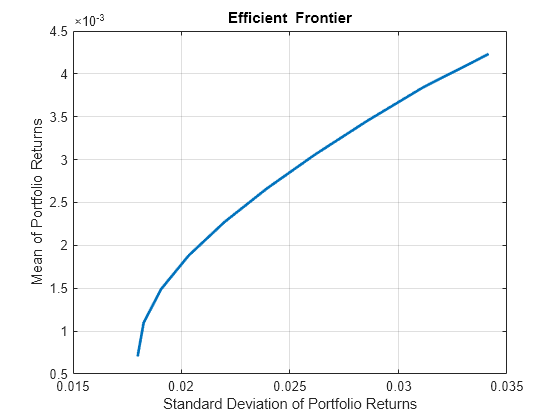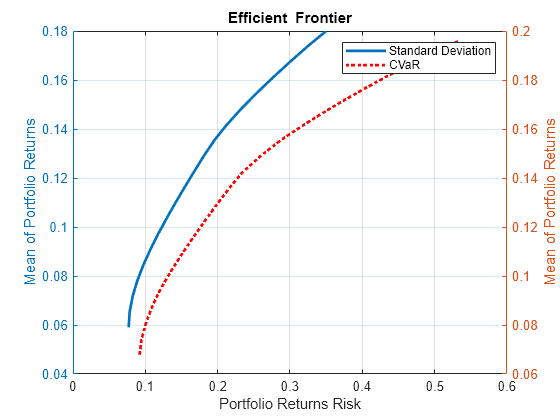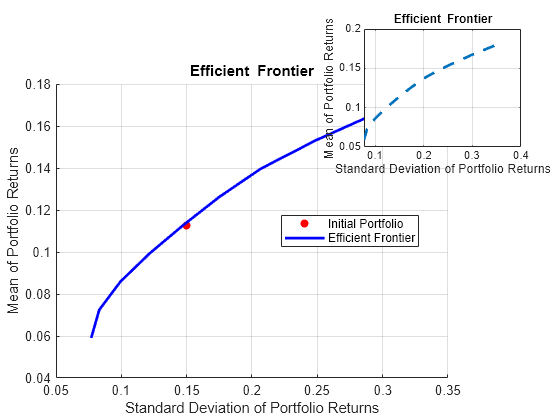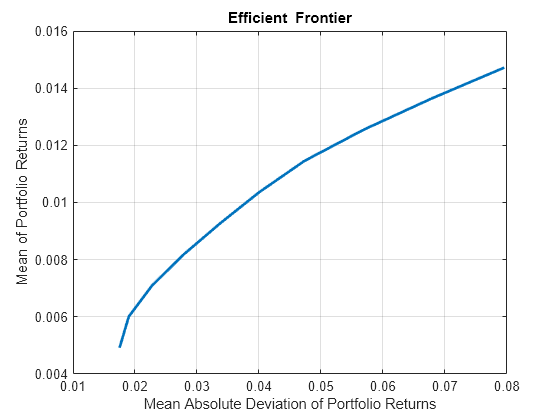plotFrontier
绘制有效边界
语法
说明
[ 针对 prsk,pret] = plotFrontier(obj)Portfolio、PortfolioCVaR 或 PortfolioMAD 对象使用默认的 10 个投资组合估计有效边界,并绘制相应的有效边界。有关使用这些不同对象时各自工作流的详细信息,请参阅 Portfolio 对象工作流、PortfolioCVaR 对象工作流和 PortfolioMAD 对象工作流。
[ 使用指定数量的投资组合 (prsk,pret] = plotFrontier(obj,NumPortfolios)NumPortfolios) 估计有效边界,并绘制相应的有效边界。
[ 使用 prsk,pret] = plotFrontier(obj,PortfolioWeights)PortfolioWeights 估计有效投资组合的风险和收益,并使用这些投资组合绘制有效边界。此语法假设您提供有效的有效投资组合权重作为输入。PortWeights 是一个 NumAssets×NumPortfolios 矩阵。
[ 使用给定的风险和收益绘制有效边界。此语法假设您为有效投资组合风险和收益提供了有效的输入。prsk,pret] = plotFrontier(obj,PortfolioRisks,PortfolioReturns)PortfolioRisks 和 PortfolioReturns 是大小相同的向量。
注意
plotFrontier 可处理上述多种输入格式。请记住,对于给定包含 NumAssets 个资产的资产池和包含 NumPortfolios 个投资组合的有效边界,投资组合权重是 NumAsset×NumPortfolios 矩阵,投资组合风险和收益是 NumPortfolios×1 列向量。
示例
输入参数
名称-值参数
输出参量
详细信息
提示
您还可以使用圆点表示法来绘制有效边界。
[prsk, pret] = obj.plotFrontier;



![Figure contains an axes object. The axes object with title Efficient Frontier, xlabel Standard Deviation of Portfolio Returns, ylabel Mean of Portfolio Returns contains 3 objects of type line. These objects represent p0, with Max 3 assets invested, with each asset weight 0 or [0.1, 0.5].](../examples/finance/win64/PlotEfficientFrontierPortObjBoundMaxNumExample_01.png)

